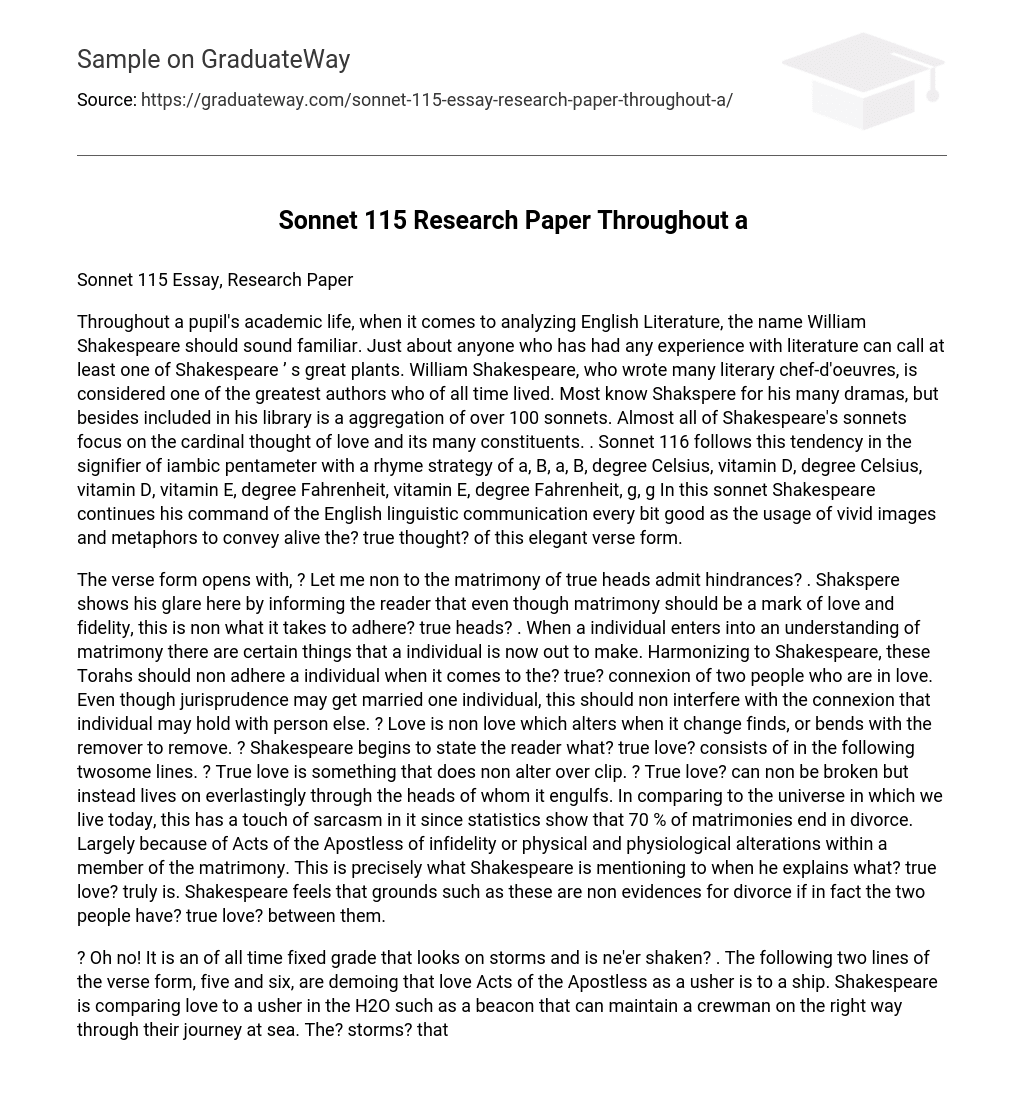There are 154 of them in total, and most of them were written in 1592-1599. Shakespeare’s sonnets were first published in 1609, apparently without the knowledge of the author. However, two sonnets appeared in print as early as 1599 in the pirated collection The Passionate Pilgrim. These are sonnets 138 and 144.
Sonnets continue to remain a mystery to this day, despite countless studies, the most famous part of Shakespeare’s poetic legacy is his sonnets. To contemporaries they seemed “sweet as sugar”. This was enough to inflame the greed of book sellers, and a “book pirate” named Jaggard printed several sonnets in his thieves’ edition of The Passionate Pilgrim (1599), which he falsely attributed to Shakespeare. Other sonnets come across in some other predatory editions of Shakespeare’s plays. And in 1609 the “book pirate” Thorp takes out a complete copy of Shakespeare’s sonnets, which were circulating in literary circles, and publishes them without the permission of the author.
However, his expectations of profit were not justified. The sonnets apparently did not appeal to the general public, because the next edition of them did not appear until 1640. And then they are forgotten and ignored to such an extent that such a conscientious person as the publisher of the classic collected works of Shakespeare (1773) Stevens did not want to reprint them .
He considered Shakespeare’s sonnets to be affectively pedantic and simply boring nonsense, and later expressed that “the strictest parliamentary law could not even forcefully deliver readers” to these sonnets. And indeed they simply stopped reading or were read to such an extent inattentively that some publishers of Shakespeare’s works claimed that Shakespeare’s beloved was sung in the sonnets, and one even assured that Queen Elizabeth I.
Only at the end of the 18th century, Malon drew attention to the fact that in the first 126 sonnets there is not even a speech about a woman, but a man is sung, and only in the last 26 does a woman appear. From the early years of the 19th century, the disregard for sonnets was replaced by an opposite attitude, initiated by the poet William Wordsworth. He spoke enthusiastically about the poetic meaning of the sonnets, and in addition, he saw an autobiographical imprint in them and believed that “the poet’s heart is unlocked with this key.” With the light hand of Wordsworth, interest in sonnets becomes contagious.
Many dozens of researchers eagerly give themselves up to the tempting task of replacing the lack of factual data about Shakespeare’s intimate life with the study of this alleged chronicle of his heartfelt experiences. But the passionate interest in sonnets has brought so much credulity and tendentiousness into the study of them that to a certain extent the question of sonnets is on the same level as the fantasies of Shakespeare – Bacon’s question (see Bacon’s Cipher).
Researchers of sonnets fall into two main directions: some consider everything in them autobiographical, others, on the contrary, see sonnets as a purely literary exercise in a fashionable style, without denying, however, the autobiographical significance of some details. At the heart of the autobiographical theory is the perfectly correct observation that sonnets are not a simple collection of individual poems. Each sonnet contains, of course, something complete, as an integral expression of some one thought. But if you read sonnet after sonnet, you will undoubtedly see that they constitute a series of groups and that within these groups one sonnet is, as it were, a continuation of another.
So, the first 26 sonnets convince some young, noble and very handsome young man to marry so that his beauty does not disappear and continues to live in his children. A number of sonnets glorify this young man for providing enlightened patronage to the poet, in another group there are bitter lamentations that other poets have taken possession of the patronage of a high patron. In the absence of the poet, the patron took possession of his beloved, but he forgives him for this.
The appeal to a noble youth ends in the 126th sonnet, after which a dark-skinned lady begins to appear, with jet-black hair and black eyes. This soulless coquette betrayed the poet and lured his friend. But who is such a noble young man and who is a soulless coquette? It was then that the fantasy of researchers began to work and, mixing the authentic with the uttermost arbitrariness in the literal interpretation of poetic symbolism, discredited a significant part of autobiographical theory.
Of the moderate adherents of the autobiographical theory who enriched Shakespeareology with valuable considerations, we can name Gervinus, Ulrici, Fairnival, Swinburne, Dowden, and among the Russian scientists, to some extent N. I. Storozhenko. A vivid example of the enthusiasm for this theory is the huge chapter on sonnets in Brandes’s book. With startling frivolity, Brandeis developed and embellished the insights of one of the newest scholars and publishers of Tyler’s sonnets (Tyler, 1890).
Tyler, having accepted the assumption long ago expressed by some that Shakespeare brought out the handsome favorite of Elizabeth Earl of Pembroke in the young patron, he also sees the court lady Mary Fitton, known for her adventures, in the “black” beauty of the last sonnets. And so, using the purely literary techniques of sonnets, Brandeis gave a whole novel about Shakespeare’s connection with Fitton, and in the bitter feeling left by her betrayal, he sees the source of Shakespeare’s dark period.





